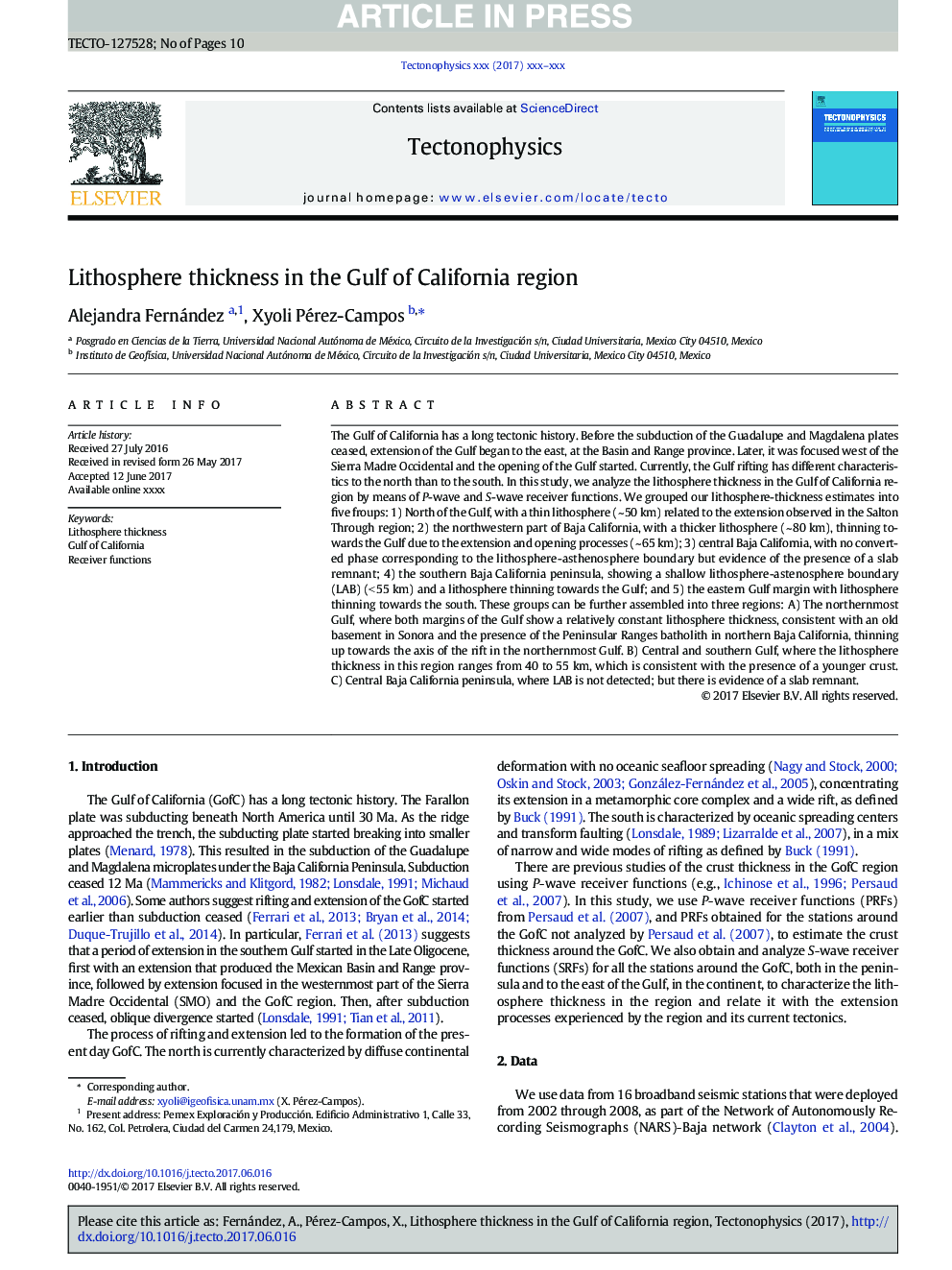| کد مقاله | کد نشریه | سال انتشار | مقاله انگلیسی | نسخه تمام متن |
|---|---|---|---|---|
| 8908850 | 1636689 | 2017 | 10 صفحه PDF | دانلود رایگان |
عنوان انگلیسی مقاله ISI
Lithosphere thickness in the Gulf of California region
ترجمه فارسی عنوان
ضخامت لیتوسفر در منطقه خلیج کالیفرنیا
دانلود مقاله + سفارش ترجمه
دانلود مقاله ISI انگلیسی
رایگان برای ایرانیان
کلمات کلیدی
ضخامت لیتوسفر، خلیج کالیفرنیا، توابع گیرنده،
موضوعات مرتبط
مهندسی و علوم پایه
علوم زمین و سیارات
فرآیندهای سطح زمین
چکیده انگلیسی
The Gulf of California has a long tectonic history. Before the subduction of the Guadalupe and Magdalena plates ceased, extension of the Gulf began to the east, at the Basin and Range province. Later, it was focused west of the Sierra Madre Occidental and the opening of the Gulf started. Currently, the Gulf rifting has different characteristics to the north than to the south. In this study, we analyze the lithosphere thickness in the Gulf of California region by means of P-wave and S-wave receiver functions. We grouped our lithosphere-thickness estimates into five froups: 1) North of the Gulf, with a thin lithosphere (~Â 50Â km) related to the extension observed in the Salton Through region; 2) the northwestern part of Baja California, with a thicker lithosphere (~Â 80Â km), thinning towards the Gulf due to the extension and opening processes (~Â 65Â km); 3) central Baja California, with no converted phase corresponding to the lithosphere-asthenosphere boundary but evidence of the presence of a slab remnant; 4) the southern Baja California peninsula, showing a shallow lithosphere-astenosphere boundary (LAB) (<Â 55Â km) and a lithosphere thinning towards the Gulf; and 5) the eastern Gulf margin with lithosphere thinning towards the south. These groups can be further assembled into three regions: A) The northernmost Gulf, where both margins of the Gulf show a relatively constant lithosphere thickness, consistent with an old basement in Sonora and the presence of the Peninsular Ranges batholith in northern Baja California, thinning up towards the axis of the rift in the northernmost Gulf. B) Central and southern Gulf, where the lithosphere thickness in this region ranges from 40 to 55Â km, which is consistent with the presence of a younger crust. C) Central Baja California peninsula, where LAB is not detected; but there is evidence of a slab remnant.
ناشر
Database: Elsevier - ScienceDirect (ساینس دایرکت)
Journal: Tectonophysics - Volumes 719â720, 13 November 2017, Pages 17-26
Journal: Tectonophysics - Volumes 719â720, 13 November 2017, Pages 17-26
نویسندگان
Alejandra Fernández, Xyoli Pérez-Campos,
